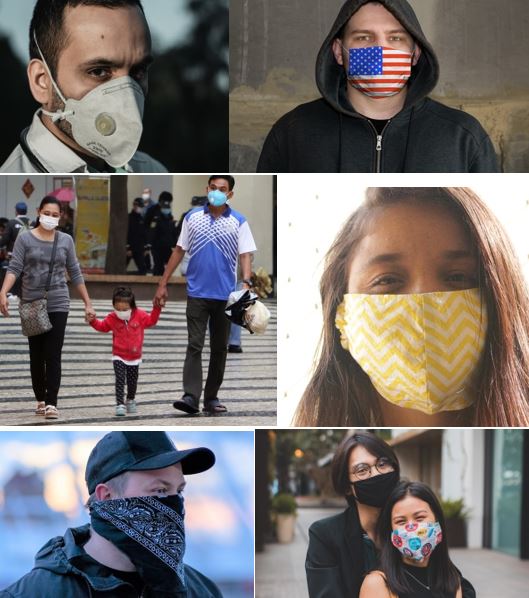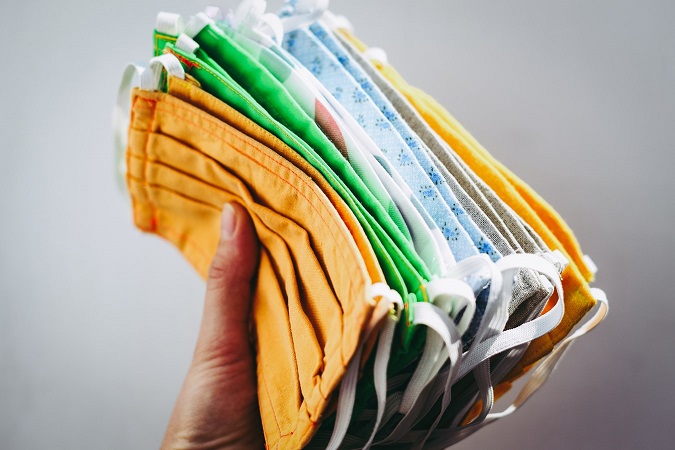The best masks: Comfort over style

With health authorities continuing to urge face-covering in public to curb the spread of COVID-19, we’ve become familiar with the minor irritants of wearing masks: chafed ears, foggy glasses, snapped straps. The arrival of summer takes the potential discomfort up a notch, trapping sweat and heat under our facial sheaths.
Keeping your face covered when venturing outside the home remains a crucial weapon in the fight against the coronavirus, recommended by the Centers for Disease Control and Prevention (CDC) and mandated by some state and local governments. Fortunately, there are ways to stay cool or, at least, cooler while masked up. Here are five tips from experts:
1. Choose the right fabric
A light, breathable material like cotton will likely keep your face cooler than medical and N95 masks made from synthetic materials, and in the right configuration can be effective in preventing contagion, according to new research by Taher Saif, a professor of mechanical science and engineering at the University of Illinois.
Saif’s team tested 10 common fabrics, from 100 percent cotton to polyester and silk blends, to see which best balance comfort and droplet-blocking impermeability. The “sweet spot,” he says, is a two-layer mask made from a cotton T-shirt, which comes close to matching a surgical mask’s efficiency in stopping potentially infectious droplets from coughs and sneezes and is about twice as breathable. All-cotton tested best, but up to 40 percent polyester will do the job, Saif says. “Our study showed that if you have these layers on top of your mouth and nose, you don’t have to have an official mask where it goes with the elastic behind your ears. You can just wrap it around your nose and mouth, like a bandana.”
Lighter, softer cotton coverings can also help you avoid chafing, heat rash or inflaming a skin condition like eczema or dermatitis, says Carrie Kovarik, an associate professor of dermatology at the University of Pennsylvania’s Perelman School of Medicine and a member of the American Academy of Dermatology’s COVID-19 task force.
“They make masks out of a lot of different material, so you want to feel it and make sure it’s something that feels soft against your skin,” she says. “A lot of people are making masks for fashion, they want it to look nice and pretty on the face, but make sure it feels good.”
2. Keep it dry
Cotton traps less air and moisture than standard medical and industrial masks, and it’s more absorbent, but if it gets damp due to breathing and sweating it can be less effective in filtering respiratory particles, not to mention uncomfortable and abrasive to the skin.
“Try to stay in well-ventilated locations to keep air and vapor mixing, which can help evaporate any extra water (and also keep the rest of your skin/body feeling cooler),” says Jennifer Vanos, a biometeorologist at Arizona State University who studies the effects of heat on health.
3. Time trips to beat the heat
Avoid going out at the hottest parts of the day and for extended periods. Stop at home between errands if you can, to cool off and doff your mask. When you do have to be out, stay well-hydrated and seek the shade.
4. Skip the makeup

Heat and perspiration mixed with makeup or oily skin care products makes for a gunky mess under your mask.
“You don’t have the ability to have sweat evaporate when you have the mask on. It all sits there and collects,” says Kovarik, the dermatology professor. That clogs pores and contributes to the lower-face skin eruptions that have been dubbed “maskne,” a combination of the words mask and acne. He recommends masking up with your face clean, save perhaps for a bit of moisturizer (preferably with some SPF, if you plan to be out long). “Creams that have dimethicone in them are a good moisturizer but also is a barrier cream, so it creates some protection between your skin and the mask,” she says. “It will actually create a barrier to the friction.”
Another change to make to your skin care regimen: Avoid products with retinoids or salicylic acid, which some older people use to diminish wrinkles or sun damage.
“Those can be very, very irritating if used under occlusion or under some kind of covering. We don’t want to put them under the mask,” Kovarik says. “If [people] are using those products, it’s better to put them on at night and then wash your face in the morning.”
5. Bring a spare
If you can’t keep your mask from getting icky and sticky, there’s no better remedy than swapping it for another. “I recommend people do that anyway,” whatever the weather, Poland says. “When you’re outside with the mask on, that mask has a limited lifespan.”
“If you really need to remove it to cool off, move away from people, cool off, maybe switch the mask to a new one, and then go back,” Vanos says. — AARP
© The FilAm 2020











